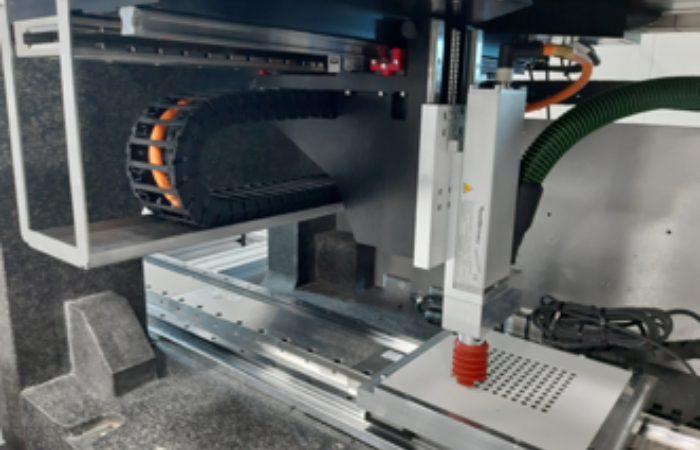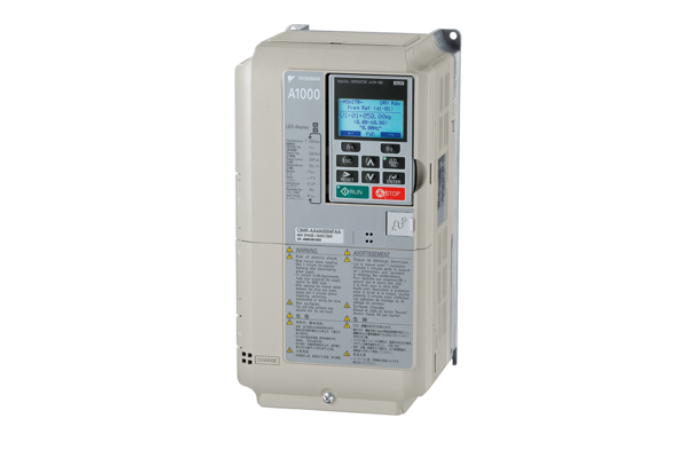
The Challenge
Today’s production techniques for manufacturing kitchens, windows, furniture, acoustic panels and other similar products have a number of things in common, although two are particularly important. One, they require a high number of precisely drilled holes and two, the drilling speed of these holes is a key determinant in their lead times. In reality, most woodworking processes have plenty of room for improvement and thanks to the latest high-speed drilling units manufacturers can finally tap into this potential. Powerful drive technology for high-power CNC applications has been important in this development.
In the of Summer 2019, drive specialist Tool Drives travelled to the LIGNA trade fair in Hanover to demonstrate what modern high-speed drilling units can do. It takes just 17 seconds for the high-speed drilling unit to drill one hundred holes 6 mm in diameter and depth in a coated composite wood panel, the type typically used for kitchen furniture and crucially with the greatest precision. During this operation, the drill reaches speeds of up to 18,000 revolutions per minute, even though It has to adapt its power to the different layers and characteristics of the panel to ensure that the cut edges and inside surfaces of the holes are smooth and clean.
However, while impressive speed isn’t everything, it’s the finished quality of the drilled holes that really counts. Commenting on the drilling processes, Volker Meier, MD of Tool Drives said, “That’s why we examined the drilling process very closely and developed a special feed screw and used motors and motion controllers with enough power to apply maximum forces while stillallowing a high degree of fine control,”He added, “Choosing the right drive components was essential to achieving the desired result. The inverter drive for the high-power drill drive needed to be able to supply an output frequency of 1,000 Hz, but at the same time, fine control of the PM motor used for the drill unit’s drive is a must”.

The Solution
The search for the ideal inverter drive for their high speed drilling unit led the designers to look at the YASKAWA range of drives and they were suitably impressed. The A1000, which was used on the drilling unit showcased at the LIGNA trade fair, supplies the required output frequency of 1,000 Hz, provides 1.5 kW of power with open-loop vector control and delivers up to 150% of its rated output for short bursts. January 2020 will also see the launch of the new GA500/1.000 Hz, which will be another option for this type of application.
However, Tool Drives choice wasn’t just down to the technical specifications of the A1000. As Meier explains: “With Yaskawa we have secured the services of an international automation specialist who guarantee worldwide support along with plenty of experience in the woodworking industry. Thanks to their extensive product range, we were also able to use them as a one-stop shop for many of the other components we needed for our drilling unit. The drive components are perfectly attuned to one another and Yaskawa gave us the expert advice we needed. Getting our control system right was a tricky task, but they helped us implement our needs precisely.”
A One-Stop Shop for Powerful Drive Components
The Yaskawa MP series’ all-in-one machine controller is a single platform that combines all the functions required for the machine’s processes, including motion and PLC functionality, inputs / outputs, sequential logic and process algorithms. The controller integration saves on system costs, reduces the amount of space the unit takes up in the control cabinet and standardizes the programming. The scalable hardware for motion applications is suitable for use in complex applications with up to 64 axes. With the high-speed drilling unit the drilled hole specifications were achieved using Yaskawa’s tried-and-tested G-code. The MotionWorks IEC software and the Yaskawa toolbox feature make programming the machine controller easier, combining the five programming options ladder diagram (LD), function block diagram (FBD), structured text, instruction list (IL) and sequential function chart in one developer package. In addition, these controllers also have a built-in web server and are compatible with international network protocols such as Profibus and Ethernet.
More information at: https://www.yaskawa.eu.com/en/case-studies/tooldrives/
https://www.yaskawa.eu.com/en/products/drives-motion-controls/ac-drives/seriesdetail/serie/a1000/
Further details available from Paul Seale: info.uk@yaskawa.eu.com
Tel: +44 (0) 1295 272755 www.yaskawa.eu.com










Water Sector Talent Exodus Could Cripple The Sector
Well let´s do a little experiment. My last (10.4.25) half-yearly water/waste water bill from Severn Trent was £98.29. How much does not-for-profit Dŵr...